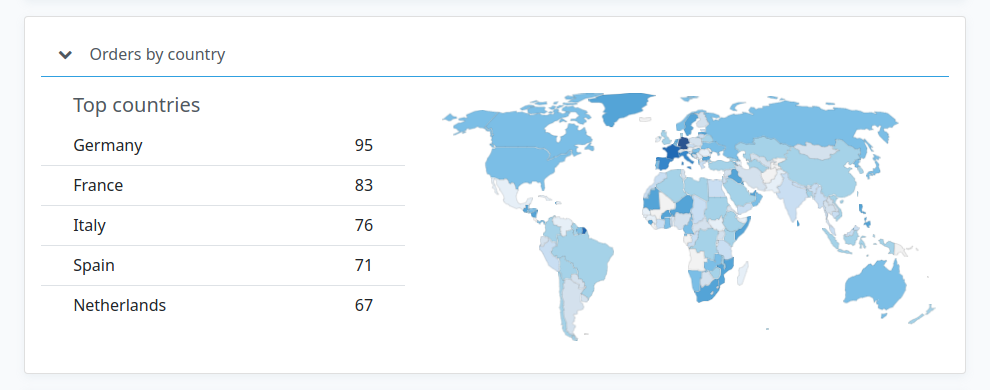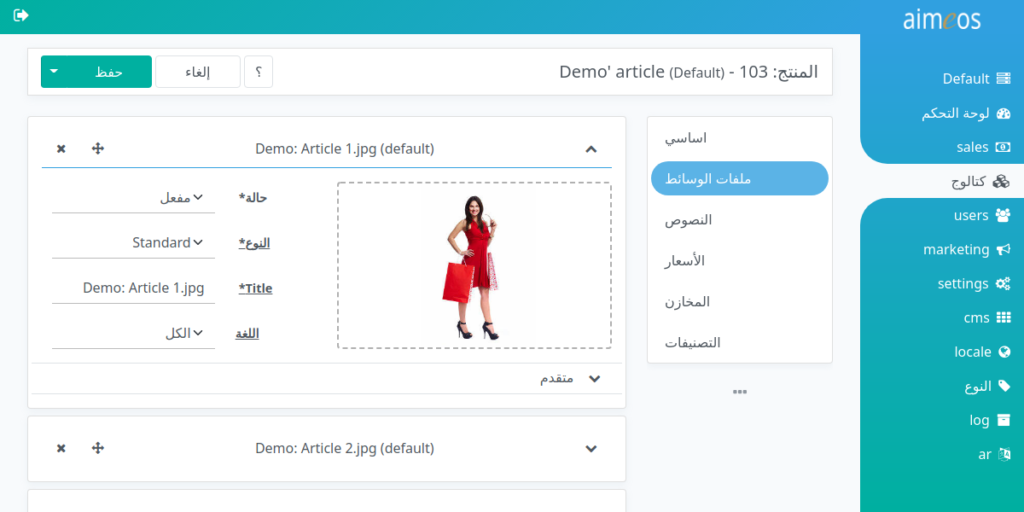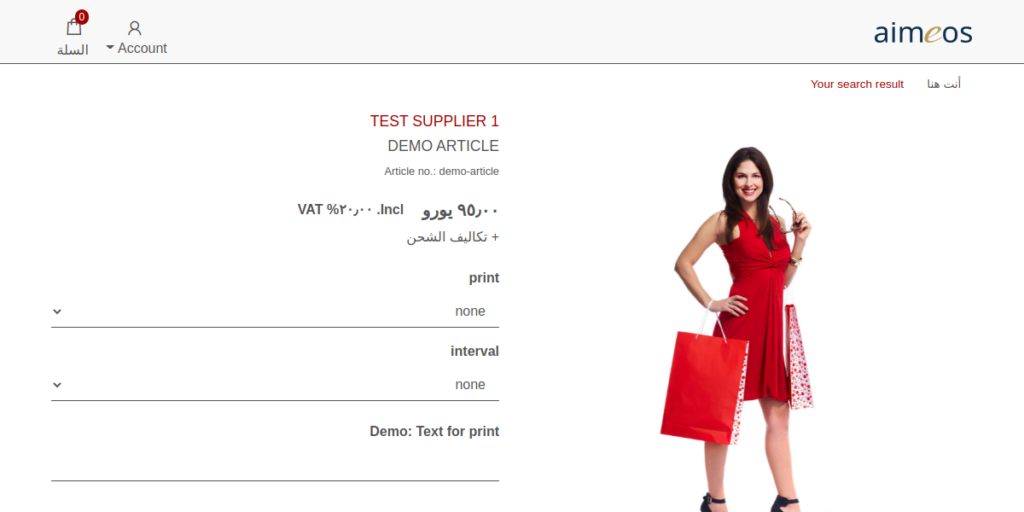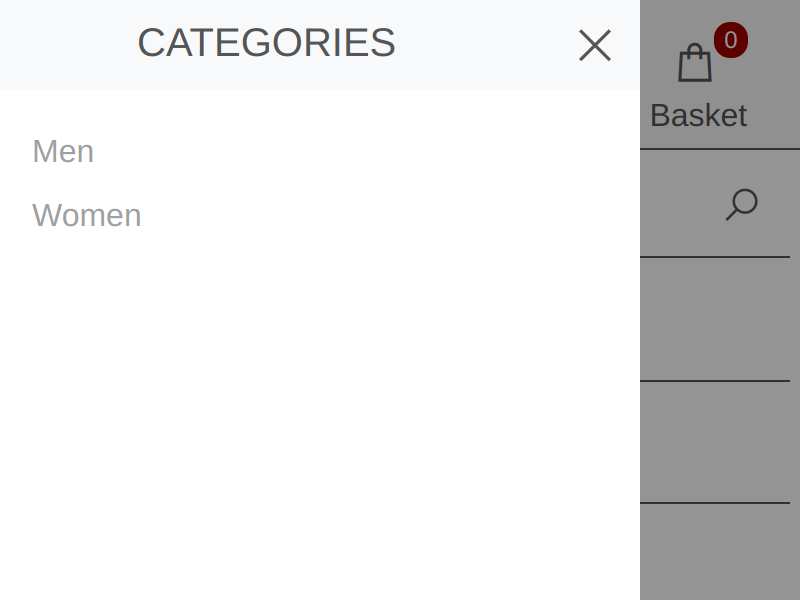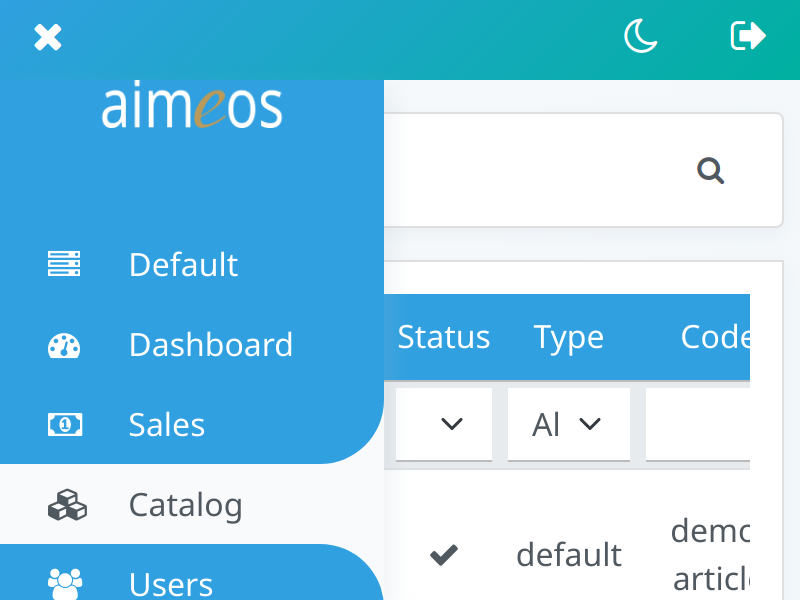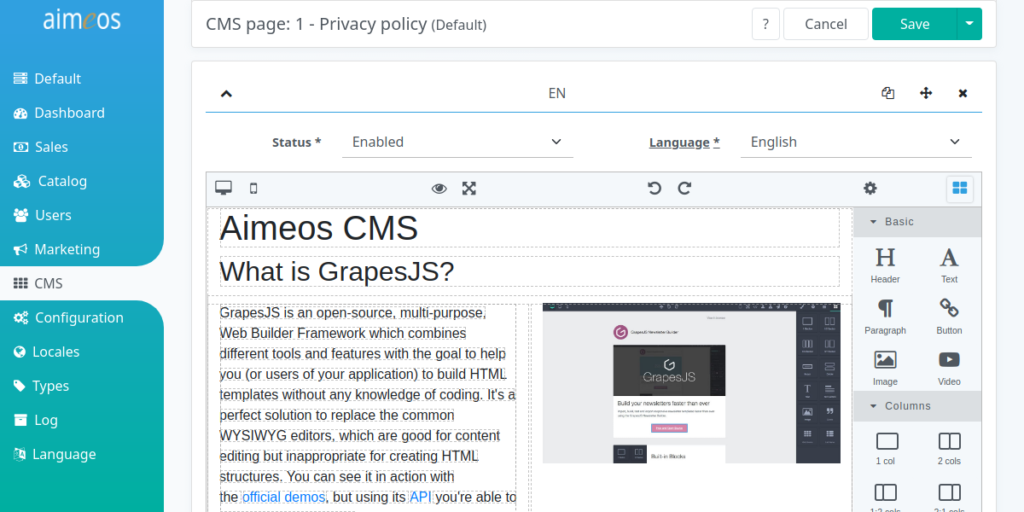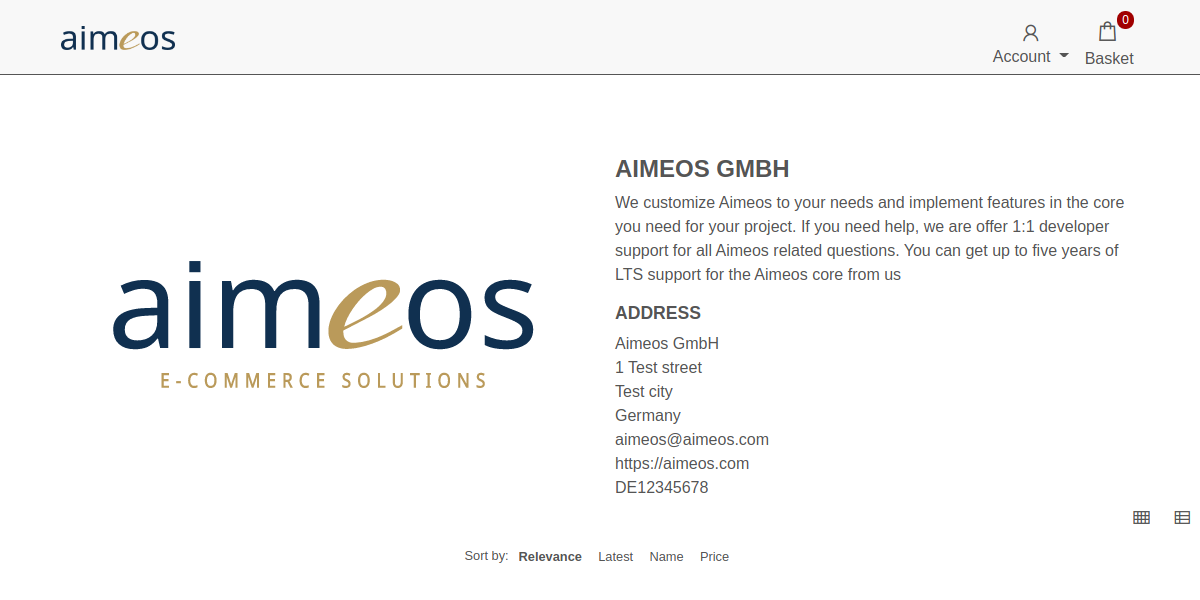
The first stable release of the Aimeos e-commerce framework in 2021 contains some major improvements in the front-end and back-end as well as several breaking changes compared to the last LTS version. The new administration interface is the most visible of these improvements for sure:
- New admin backend incl. dark mode
- RTL support in frontend and admin backend
- Full mobile optimization
- New supplier detail component
- Rule based dynamic pricing
- Extensible CMS extension
- Simplified configuration
New admin backend
The design of the admin interface has been completely reworked to resemble a modern, card based interface and includes a lot of eye candy. Compared to backends backends of other e-commerce applications, this is the most modern interface available!
Also included is a cool new dark mode for people prefering dark interfaces and which is much more eye pleasing during the night. You can activate it by clicking on the moon symbol in the upper right corner and once activated it will be used during the whole browser session.
body {
--bs-primary: #f12711;
--bs-primary-alt: #f5af19;
}Even if you find the new admin backend too colorful or you prefer other colors to match your companies corporate identity, it’s extremely easy to adapt the theme now. All colors are defined using CSS variables so you can modify them with a few lines of code, e.g.
As you may have already noticed, the admin dashboard has additional panels for a quick overview for orders and customers and the change compared to the last seven days.
Furthermore, there’s a new panel for orders by countries including a world map to see immediately where your customers are coming from. All panels are lazy loaded if you scroll down to reduce the number of requests.
As a major change, all dashboard panels are now implemented using Chart.js instead of D3.js. The new library is much easier to use due to the chart types available out of the box that can be adapted by configuration instead of implementing own code and they also produce smoother graphs.
RTL support
Starting which this release, Aimeos has built-in support for right-to-left languages like Arabic, Hebrew and other languages which are written from right to left contrary to languages based on e.g. Latin which are written from left to right.
Besides the text direction this also includes placing of components, menus as well as paddings and margins.
The front-end and back-end of Aimeos is automatically and fully mirrored if an RTL language is selected.
You can try yourself by chosing e.g. Arabic in the language selector of the back-end or add Arabic to the available locales in the front-end. The rest is now automatically done by Aimeos if you use the latest templates.
Full mobile optimization
In addition to the mobile optimizations in previous releases, all menus and the small basket in the front-end are now implemented as offscreen menus. This ensures that even on very small mobile screens down to 320px width, there’s always enough space for the content. Moreover, this adapts the design patterns from mobile apps so smartphone users feel like home.
Rule based dynamic pricing
Shop owners are now able to change the prices for products dynamically e.g. based on which categories the products are in. Thus, it’s possible to change prices for a group of products within a limited period of time and/or depending on the logged in customer without the need to create a new or adapt the existing prices.
The new Aimeos rule system is extremely flexible and not only allows prices to be adapted dynamically. It’s also possible to adapt any product content like images, texts, etc. dynamically based on the rules created.
Extensible CMS extension
Beginning with 2021.04, there a Aimeos content management extension available based on GrapesJS, a Javascript CMS framework for managing page content.
Contrary to CKEditor, the HTML editor used for product related and other texts, it’s a component based content editor offering building blocks like headlines, paragraphs, images, grids, forms and other building blocks. It’s a bit like the editor used by WordPress 5.
As you expect from Aimeos, you can fully extend the editor and add new components for your own purpose. Each block is defined by a few lines of HTML for the structure and the Javascript code to allow the editor to customize the component.
Supplier detail component
For those who want to show customers their more details abount the brands, producers or manufacturers of the products, a new supplier detail component is now available.
It will display all information your are entering for the supplier items in the admin backend including images, texts and addresses. Additionally, you can add a catalog list component to the page to list all products that belong to this supplier including sorting and pagination.
Simplified config and breaking changes
Last but not least, some breaking changes has been made compared to the 2020.10 LTS version to simplify working with Aimeos even more for shop owners and developers alike. The most notable is that the configuration settings which contained “standard” in their config keys has been shortend and the “standard” part is removed now:
// 2020.10 and before
client/html/catalog/filter/standard/subparts
// 2021.04 and later
client/html/catalog/filter/subpartsAnother important change for developers is related to the connection between the stock and product domain. Instead of the product code, now the product ID is used in all stock items to refer to the product item the stock level is associated to. This removes several problems when changing product codes and selecting the right stock level for product in marketplaces.
The full list of breaking changes are available in the Aimeos documentation.


